(Coming up – DentalReach Digital Conference & Awards DRDCA 22: Sports Edition! This is a digital international conference on sports dentistry on 12th & 13th November 2022. Have you booked your seat yet? View brochure & Register here https://dentalreach.today/drdca22-registration/ )
India is rapidly becoming a very health-conscious nation. Olympic competitions and professional sports have turned from mere dreams into reality goals. Right from small-time sports clubs in schools to major professional sports leagues, sports activities are bursting and expanding all over the country. This comes with the package of inevitable injuries, which are a part and parcel of every sport.

The National Youth Sports Foundation for the prevention of Athletic Injuries has reported that dento-facial injuries are the most common types of injuries sustained during participation in sports.
Common dento-facial injuries include:
- soft-tissue lacerations
- abrasions
- contusions
- tooth intrusions or avulsion
- crown or root fracture
- loss of one or more severe teeth with most frequent loss of upper front teeth.
The less frequent trauma includes:
- fractures of the zygoma
- mandibular fractures
- alveolar fractures
- traumatic injuries to the temporomandibular joint.
But most of these injuries can be prevented – what’s needed is awareness about it.
Importance of creating awareness
Dento-facial injuries can be an economic burden to the athlete’s parents and guardians as thousands or lakhs of rupees have to be spent in their treatment and rehabilitation. Even if few teeth are lost, the long term cost of replacement of those teeth can go in lakhs of rupees.
In addition, there is a lot of social stigma and less acceptance over facial disfigurement and thus it affects the entire life of the athlete.
Thus, the athlete’s family and the coach should take the issues of potential dento-facial injuries very seriously and work towards their prevention and early management with the help of the local dental fraternity. For this, it is extremely important that the dentists themselves are sensitized about sports dentistry and create awareness among athletes, coaches, parents and all the stakeholders regarding – prevention, emergency management and long-term management of dental trauma, especially in relation to sporting activities.
Awareness-based Sports Dentistry
With the support of other healthcare professionals and school/college officials, athletes and parents should be made aware of the risk of sustaining orofacial injuries while participating in the sports.
- Athletes and parents should have enough knowledge so that they can take proper decisions regarding usage of protective devices.
- If mandatory rules are implemented, then it will have more positive results. Many sports dentistry specific organizations have flourished all over the world from 2011 to 2020 and they are striving hard for mandating mouthguards and creating awareness amongst both athletes and dentists regarding the same.
- Similarly, all the dental organizations in India must come up together and declare a common statement regarding mandating mouthguard use in selected sports. More labs having dental thermoforming machines should be available for the ease of the dentist to make more custom- fabricated mouthguards.
- Team mouthguard programs should be organized as they will be financially viable to the dentist who will get bulk business and hence can give bulk discounts to the athletes.
There is a great deal of sporting activity happening in India and especially after Tokyo 2020 historic win of so many medals by athletes, people’s interest in sports has increased multi-fold. Region-based and sport-based organizations are spread all over India and they are trying their best to bring out the best in the athletes. With so many sports science and sports health care disciplines having their own set of rules and regulations in place for the betterment of the athlete, its high time sports dentistry gets its rightful place and few mandates regarding both mouthguards and oral health of athletes should come into force, that too uniformly all over the country.
As a part of community service, in collaboration with DentalReach, I will be organising a social webinar where athletes, coaches and parents will be sensitised about sports dentistry. It will be held on 6th November, Sunday at 3 pm. This patient-based webinar can serve as an important guide to dentists, aiding them how to spread awareness amongst their community circles about prevention and timely management of sport based dento-facial injuries. Hence, I would like to invite all dentists to attend this awareness program, and learn the tips and tricks in how to counsel and convince patients for sports dentistry.
Prevention-based Sports Dentistry
As per many studies and surveys done, the very fact that many athletes need treatments for tooth, bone or oral and perioral soft tissue injuries as a result of participation in sports makes it very important to plan and prevent incidences of such dento-facial injuries. The overriding importance of the dentist’s ability to meet the diagnostic and therapeutic needs of those with oral injuries lies in the emotional and psychological importance to the athlete of having a normal appearance and function of the face and its components.
Therefore, Sports Dentistry is needed for a practical side of health care as well as for the emotional and esthetic consequences of facial or dental trauma. Fortunately, modern dentistry has developed numerous techniques and appliances to help protect the sports participant from a variety of dento-facial injuries. In fact, preventive sports dentistry represents the most important contribution the dental profession can make to assure an athlete’s welfare, with the sports dentist playing a significant role along with medical professionals of all other allied branches of sports medicine.
Understanding Risk Factors for Preventing Dental Injuries in Sports
It is important for the coach, parent and the athlete to know the various risk factors associated with various sports. Even for the sports dentist, the ability to identify effectively athletes who are at high risk for sports-related traumatic injuries helps in suggestion and implementation of preventive intervention for the athlete. A number of risk factors have been identified for predicting sports-related traumatic dento-facial injuries. The risk factors are mainly of 3 types –
- agent factors
- host factors and
- environmental factors.
AGENT FACTORS
The agent factor is the agent of injury and is the form of energy that damages body tissues. In sports dentistry, it is usually the energy associated with the rapid impact of hard or soft objects to the face/teeth/skull/soft tissues causing an injury.
- Fast moving sports would appear to predispose to injury as a result of collisions.
- The same is ‘time of those sports’ that use projectiles balls, pucks or some form of sticks. Bats, hockey sticks and similar sports equipment are associated frequently with soft tissue lacerations and contusions as well as certain displaced fractures.
- Other factors like the conditions of the playing fields and the fit of the safety equipment affect the amount of risk to which the athlete is exposed.
HOST FACTORS
The host or the injured individual can be described not only by age and sex, but also developmental level, from toddlers learning to run or throw a ball; to school aged children learning to swim and play various games; to adolescents playing contact sports; to older individuals whose diminished eyesight and slowed reflexes make them susceptible to injury.
Age and growth: There is difference in the risk of sports injury with age.
- With the increasing age of children, changes in co-ordination, conditioning, training and playing skills are observed. The developing child needs to adjust learned skills rapidly to the changing dimensions of his or her body. Their inability to adjust to new body proportions and make necessary skill adjustments may result in increased vulnerability and risk of injury during this age.
- After completion of puberty/ growth phase, the athlete is at his/her prime level of playing any sport and can have very good co-ordination, training and playing skills.
- However, the diminution of these same factors with advancing age can increase chances of injury. Degenerative changes in the bone, ligaments and other connective tissues may also be important factors that increase risk of dento-facial injury in older players.
Gender: Gender is a potential risk factor as there is an apparent tendency for men and boys to select more aggressive or contact sports. Many studies have concluded that boys seem more prone to dento-facial injuries than girls.
According to National Youth Safety Sports Foundation (NYSSF) 1994 survey, the ratio of injuries in boys to girls is 3:1.
However, some authors suggest that girls are at higher risk than boys when exposure rates are taken into account.
Perception of the parents also differs toward son/daughter injury risk, as shown by their tendency to require their sons to wear mouthguards but not their daughters. This will hold truer in India where participation of girls in various sports and support given to them by their parents has been increasing only in the last decade.
However, attitudes are slowly changing and the obvious importance that the female athlete’s family has in maintaining the structural integrity of her face will motivate them to take more preventive steps and get mouthguards fabricated in the future. This will dramatically decrease chances of dento-facial injuries for female athletes as well.
Physical and Mental Fitness: An increased body size can increase chances of injury for the athlete; this can be due to higher center of gravity and stress on joints due to additional weight.
- A number of research studies have documented that excessive height and weight predispose athletes to injury.
- Since physical fitness of the athlete can lessen the onset of symptoms of fatigue, it can be assumed that aerobic fitness can predict some prevention of sports injuries.
- This suggests that unfit athletes would be more prone to injury as their stamina and concentration both can get affected. Strength acquired by the athlete through proper conditioning can reduce the potential for injuries. On the other hand, localized weaknesses, muscle imbalances or tightness appear to predispose an individual to sports injury.
For many athletes, inherent personality factors and mental health fitness may play a role in the prediction of sports-related injuries. Children with emotionally stressful states, as investigated by differences in urinary catecholamines, pose a greater risk of dento-facial injury.
Skilled Coaching and history of previous injury: A lack of skilled coaching can increase risk potential for the athlete. Without proper instruction and guidance in physical fitness and sporting skills, the athlete is less able to respond in game situations, thereby increasing injury risk. In fact, it is proven that athletes are influenced by their coaches more than their parents, other athletes or officials.
Some studies have found out that one of the most important risk factor for dento-facial injuries in sports was having a previous injury, which affects the psychological or psychosocial mind-frame of the athlete. Especially those athletes who have undergone a considerable amount of dento-facial trauma due to a sports injury, it is very important to boost the confidence and remove any fears of injury from the athlete’s mind.
Orthodontic status and other dental issues: The relationship of the upper jaw to the lower jaw affects the vulnerability to injury.
Many studies have shown that orthodontic status plays a significant role in risk of trauma to the upper front teeth, for example, risk of injury increases in:
- Proclined maxilla (upper jaw placed more in the front in relation to the lower jaw with many times upper front teeth projecting out),
- a short upper lip or incompetent lips and
- mouth breathers.
Athletes with severe dental problems are at increased risk of injury as discomfort in the mouth or teeth can hamper the confidence and concentration of the athlete while playing.
ENVIRONMENTAL FACTORS
In some of the unforeseen circumstances, sometimes the nature factors such as
- condition of light (e.g. dull light),
- disturbed air conditions
- modified humidity conditions
- rains
may cause disturbed physical conditions.
Sports injuries occur when the elements of host, agent and environment interact together at a precise time. For some injury types, these elements are quite predictable.
Depending upon the risk factors given above, a predictive index can be developed that determines the likelihood of sports-related dento-facial injuries in various age groups of athletes playing different types of sports. This predictive index will help the coach, team physician and dentist to understand the risk of injury for a particular athlete playing a particular sport and help in taking preventive measures.
Conclusion
To conclude, awareness creation will bear fruit if there are proper mandates and policies in place. While mandates may be appropriate for some sports, education and the use of marketing and social media will likely be more effective in achieving the desired outcome. By focusing on creating a culture among parents, students, coaches and the general public that mouthguard use is part of participating in sports, the use of orofacial protective devices will increase and hopefully become the norm rather than the exception.

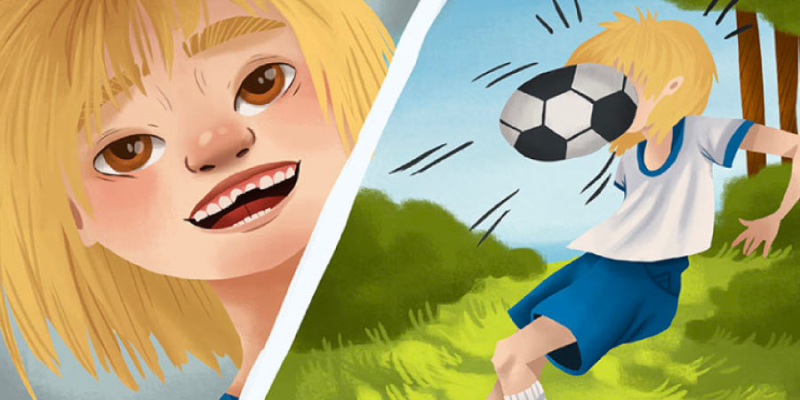



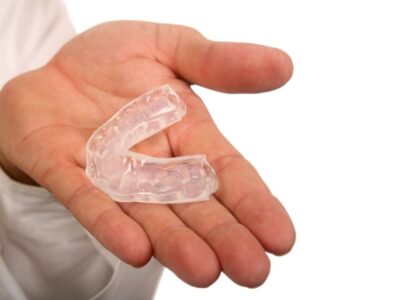
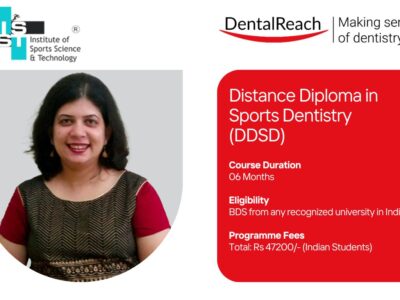
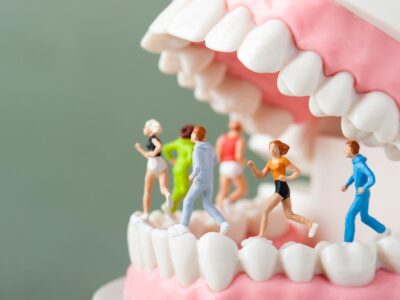

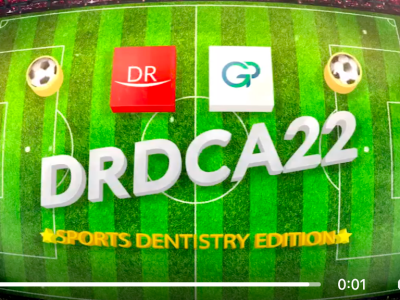
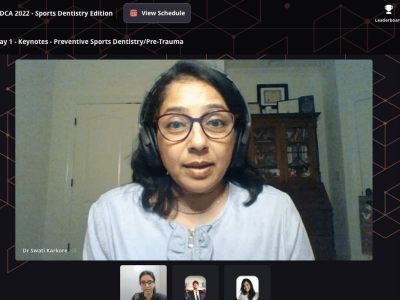









Comments